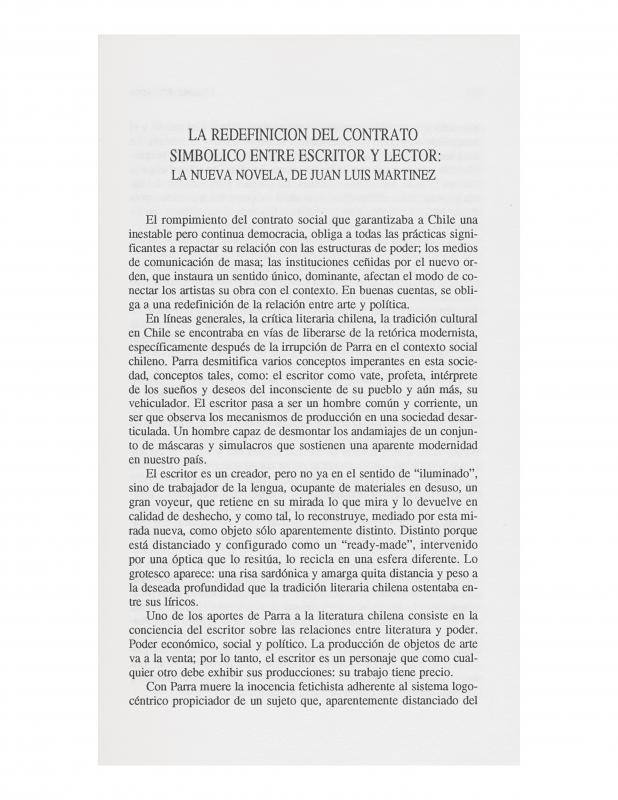The poet and artist Cecilia Vicuña (b. 1948) wrote “Xuan Luis” for the book Martínez: Merodeos en torno a la obra poética de Juan Luis Martínez [Martínez: Prowling Around the Poetic Works of Juan Luis Martínez] (2001), which was edited and published by the poets Soledad Fariña (b. 1943) and Elvira Hernández (b. 1951) as a tribute to the work of Juan Luis Martínez, who was also a poet and a visual artist.
Juan Luis Martínez (1942–1993) made a name for himself in Chile by creating works that challenged the boundaries of language, writing, authorship, and “the I” of the lyrical tradition, abandoning the transcendental and universalizing voice. For these reasons, his work is seen as an important contribution to recent Latin American poetry. His explorations were not limited to writing, since he also created visual art (collages and constructed objects) to combine excerpts, altering linear meanings and encouraging the flowering of myriad interpretations. He produced just two book-objects: La nueva novela [The New Novel] (1977) and La poesía chilena [Chilean Poetry] (1978); in both, he blurred the lines between poetry and visual art by exposing the material nature of the book and introducing different elements. La poesía chilena is a box containing a bag of soil from the central valley in Chile and death certificates of the poets Gabriela Mistral (1889–1957), Pablo de Rokha (1894–1968), Pablo Neruda (1904–1973), and Vicente Huidobro (1893–1948), plus one testifying to his own father’s demise. This work was a cross between biography and the history of poetry in which these famous names were enshrined. [For more information on this matter, see the following in the ICAA Digital Archive: “La redefinición del contrato simbólico entre escritor y lector. La nueva novela de Juan Luis Martínez” (doc. no. 751667) by María Eugenia Brito.]
Cecilia Vicuña launched her career as a poet and artist at an early age with a string of ephemeral and experimental works. She produced Otoño y Pinturas, Poemas y Explicaciones, an installation at the Museo Nacional de Bellas Artes (Santiago, 1971) that included dead leaves she had collected in various parks in Santiago. She published the bilingual book Sabor a mí [Taste of Me] in England in 1973 through Beau Geste Press, an independent publisher. The London book included her poetry, reproductions of her paintings of Lenin, Fidel Castro, Salvador Allende, and Violeta Parra, and self-portraits such as the “Angel of Menstruation.” There were also articles about the overthrow of democracy in Chile that year and the socialist experience of the Unidad Popular. Among her best-known works are her Palabrarmas [WordWeapons] that reflect the militaristic role she envisioned for writing, artifacts that could question viewers, “the only weapon allowed,” as she said. Vicuña and Martínez shared a love of the linguistic games that combined poetry with the visual arts. [For other aspects of the poet’s work, see: “Suspensión y disposición en el trabajo de Cecilia Vicuña” (doc. no. 754571).]


